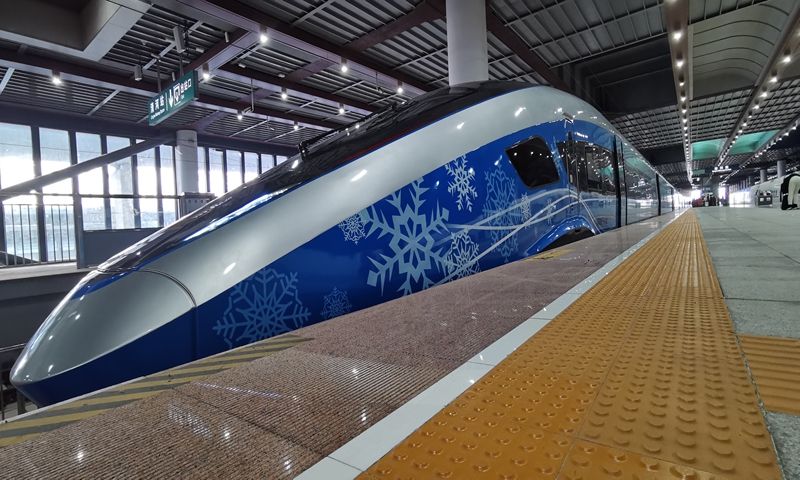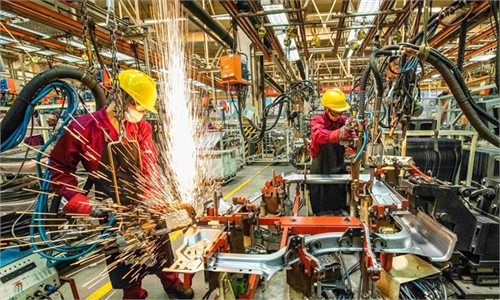China becomes major manufacturing and cyber power after decade of achievements: MIIT

China State Railway Group Co launches the 5G express Fuxing bullet train designed especially for the 2022 Winter Olympics on January 6, 2022. Photo: Courtesy of China State Railway Group Co
China has consolidated a number of achievements in industrial and information technology over the past ten years, setting a solid foundation for a historical transition to becoming a "major manufacturing power" and a "major cyber power," an official from the Ministry of Industry and Information Technology (MIIT) said on Tuesday.
Xin Guobin, vice minister of the MIIT, made the remarks during a press conference held in Beijing that was focused on highlighting China's achievements in industry and information technology sectors over the past decade, since the 18th National Congress of the Communist Party of China (CPC) in 2012. The CPC will hold its 20th national congress later this year.
Xin noted that from 2012 to 2021, China's value-added industrial output grew from 20.9 trillion yuan ($3.1 trillion) to 37.3 trillion yuan, with an average annual growth rate of 6.3 percent, much higher than the 2 percent of the annual growth of global industrial added value during the previous period.
Manufacturing value-added output increased from 16.98 trillion yuan to 31.4 trillion yuan, accounting for nearly 30 percent of total global output, according to the official.
The country now boasts a complete industrial system, with 41 major industrial categories, 207 medium industrial categories and 666 small industrial categories. The resilience and competitiveness of China's industrial and supply chains continue to improve, effectively enhancing the ability of the national economy to cope with external shocks, Xin noted.
Since the outbreak of COVID-19, a large amount of vaccines and personal protective equipment have been provided to the international community, providing strong support for the global fight against the pandemic and the global economic recovery.
As of May 2022, China has provided 153 countries and 15 international organizations with 4.6 billion items of protective clothing, 18 billion test reagents, more than 430 billion masks, and 2.2 billion doses of COVID-19 vaccines.
Over the past ten years, China has seen accelerated development of emerging industries, including service robots, intelligent wearable equipment and other products. The production and sales of new energy vehicles have ranked first in the world for seven consecutive years, and the output value of new materials industry doubled.
According to Xin, the proportion of high-tech manufacturing and equipment manufacturing to industrial value-added rose from 9.4 percent and 28 percent in 2012 to 15.1 percent and 32.4 percent in 2021, respectively.
China has built the world's largest and technologically advanced network infrastructure, with 5G cell phone users reaching 413 million over the past ten years, Han Xia, another official from the MIIT said, noting that 5G, big data, cloud computing, artificial intelligence and other advanced technologies have been deeply integrated with the manufacturing industry.
Over the past decade, a number of super projects have emerged in China, such as the "Fuxing" high-speed trains, the Baihetan hydroelectric power station and the C919 large aircraft, which is an important symbol of a country's comprehensive strength and technological progress.
In terms of the resumption of work and production in China's major centers, Xin noted that Shanghai SAIC's production in early June achieved a year-on-year increase of nearly 60 percent, and Tesla's Shanghai factory has recovered to full production capacity. In the Greater Bay Area, industrial enterprises in South China's Guangdong Province have basically resumed normal production.
At present, the resumption rate of industrial enterprises has exceeded 98 percent, and key industries such as automobiles and electronic information, which were affected by the epidemic earlier, have basically returned to normal operations.
Global Times


